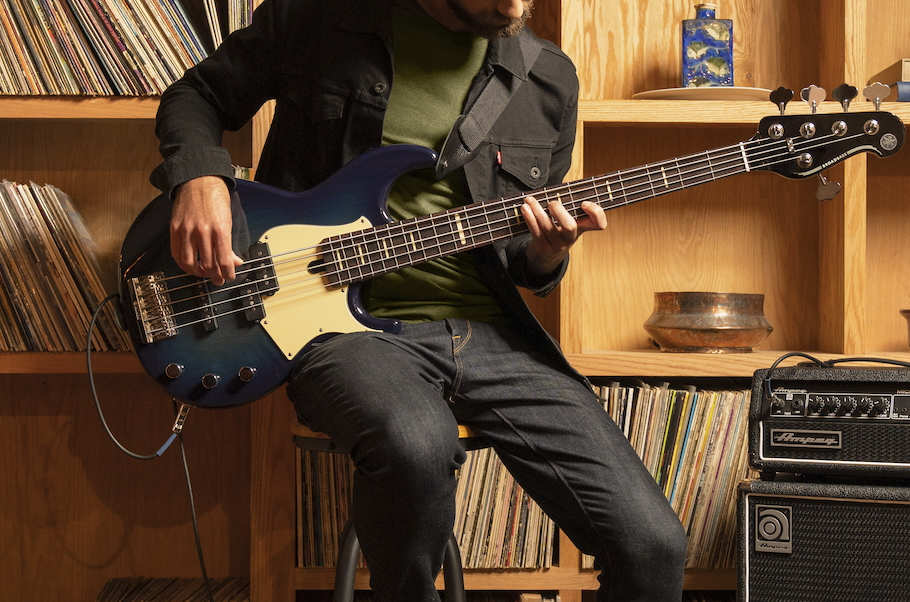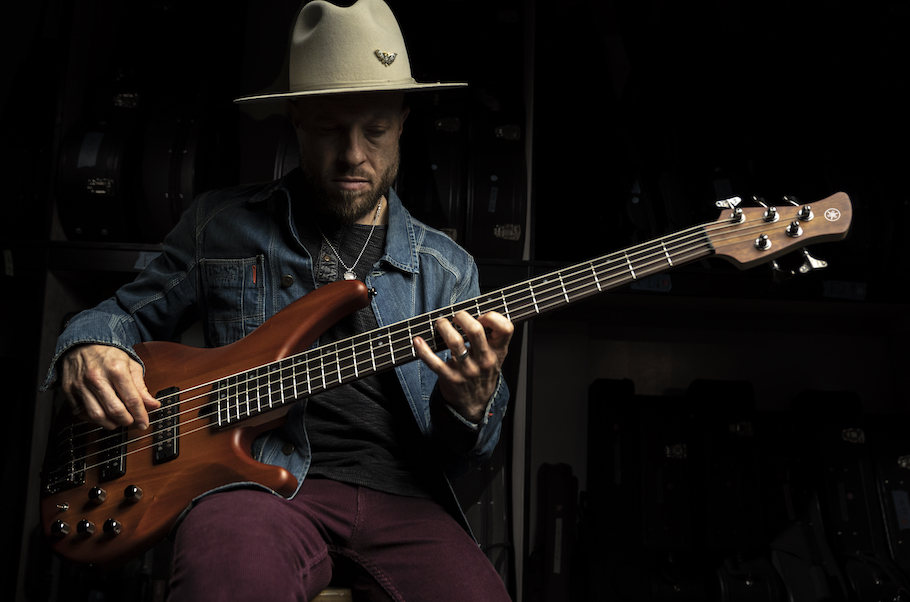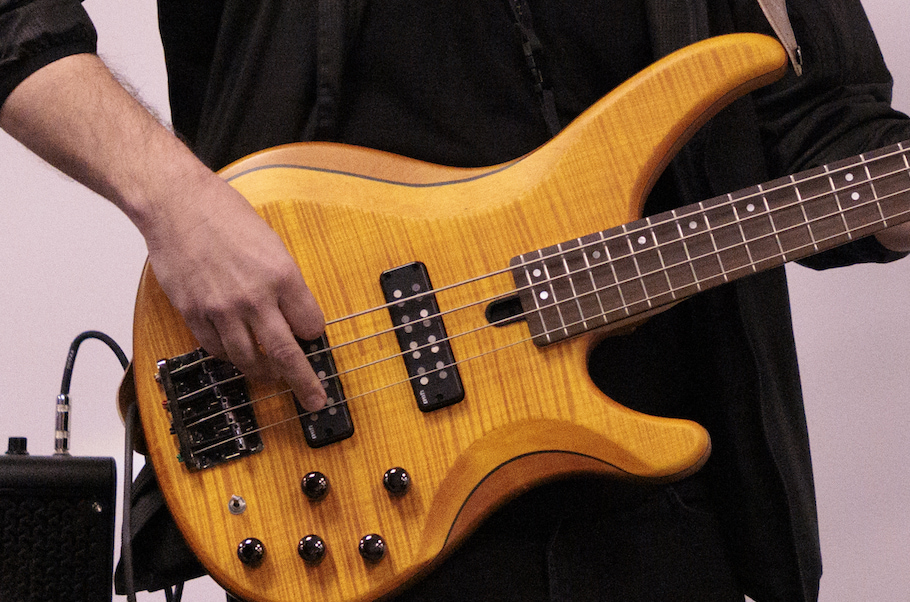Tips for the Beginning Bassist
Jump-start your journey to Bassdom by following these six guidelines.
You have to learn to crawl before you can walk (or run). That old saying applies perfectly to learning how to play bass. Looking back, I can see how the choices I made as a beginner — and those my parents helped me with — led me to where I am today as a bassist.
It was the 1980s. I had a mullet and a misplaced love for acid-washed jeans. Right there, someone should have planned an intervention that would’ve spared me some agony. My saving grace? A tired old bass, an equally moth-eaten amp and endless enthusiasm for practicing.
Despite the lack of style and quality gear, I figured out a way to make it all work, and proceeded to wear out cassette tapes and LPs until I could nail even fairly complex basslines note for note. Coupled with a voracious appetite for live music and college radio stations, I built up my chops, found and emulated my musical heroes, and eventually arrived at my own quirky style.
But if I had known then what I know now, it could’ve come together more readily … and that’s what this article is all about. In addition to steering you clear of the fashion mistakes I made way back when, I’m going to share some pointers to put you on the fast track to bass glory.
1. It Starts with the Right Bass
My first bass was terrible — a splintery hunk of plywood with barbed wire for strings and frets that would cut you for looking at them the wrong way. Luckily for you, many of today’s entry-level basses are light years better than my old albatross was, and with a little research, you’ll see there’s no reason to own a bass that hurts you when you play it, or one that costs too much.
Take the Yamaha RBX170 and TRBX174 basses, for instance. Both deliver the goods right out of the box, with lots of swagger, gobs of tone, solid construction and an affordable price. They’re easy to play too, thanks to their low string height, comfortable neck profiles and ergonomic balance. These are the key attributes that keep aspiring players inspired, rather than deterred, by their instrument.
If you already own a beginner’s bass that doesn’t speak to you when you pick it up, you might consider upgrading to an intermediate instrument like the Yamaha BB234 (or its 5-string cousin, the BB235.) It’s a true workhorse, with classic looks, durability, sweet sounds and the kind of playability that serious musicians expect and deserve.

2. You’ll Need a Real Amplifier Too
Today’s amps and speaker cabinets are light enough to wheel around with one hand and small enough to sit next to you in the back seat of a taxi … but powerful enough to blow the doors off of any room. Bigger isn’t necessarily better, so ignore refrigerator-size rigs and look carefully for a combo (amplifier and speaker combined in a single footprint) or an amp that marries the tone-shaping capability and power you need with a high-quality 2 x 10″, 1 x 12″ or 1 x 15″ cabinet. One good option in the latter configuration is the Ampeg™ Rocket Bass RB-115. It’s got that classic beefy Ampeg sound in a portable, easy-to-transport package.
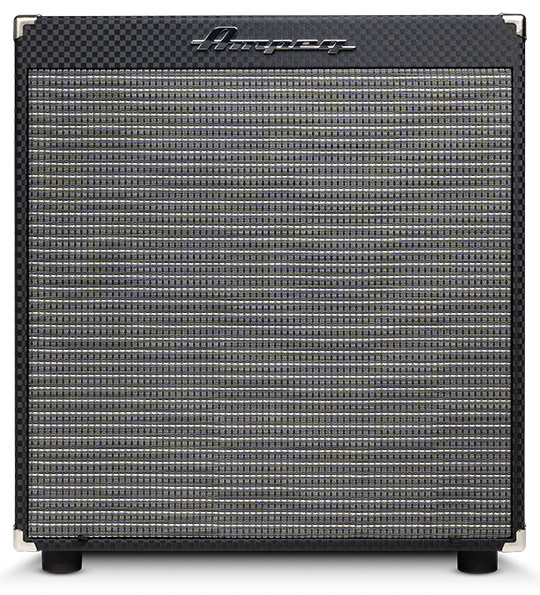
By the way, when it comes to amplifiers, know this: Your parents or roommates won’t be disappointed if said bass rig comes with a headphone output jack.
3. Find a Good Teacher and Commit to Taking Lessons
There’s no better way to get started than under the wing of someone who knows more than you do and has the patience to guide you through the struggles you’ll encounter. The right teacher will be able to assess your strengths and weakness, show you proper techniques for playing, provide you with encouragement, and challenge you regularly with observations, insights, theory and practical exercises that feed your passion and push you to grow and achieve new heights.
4. Learn How to Read Music
See above. A good teacher can help here, as can online lessons. True, there’s no law that says you can’t play the bass if you don’t know how to read music, and in fact, there’s something commendable about taking a non-traditional path toward achieving your goals. But ideally you want to be able to balance raw genius with knowledge and ability, and illiteracy of any kind will hold you back.
Don’t wait to get started, either. It may feel like slow going at first, but once you get it down you’ll have access to a language that only other musicians can speak. Make sight reading a priority early on to speed up your growth and open up doors — both musical opportunities and creative insights — that might otherwise remain shut.
5. Purchase a Tuner
If your bass isn’t in tune, chances are you’ll get lots of sour looks from bandmates and audience alike. Fortunately, it’s easy to do, even if you don’t have a particularly good ear: Simply buy a clip-on tuner such as the Yamaha GCT1. These small, inexpensive devices attach to your bass’ headstock and provide on-the-go tuning capability whether you’re on stage, in the rehearsal room or practicing on your own.
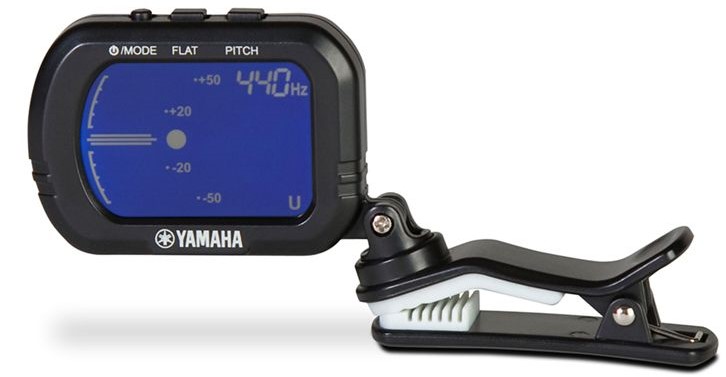
6. Make Sure Your Bass Is Set Up Correctly
A proper bass setup includes striking the preferred balance between string height, saddle height and neck bow to make your bass play comfortably and ensure that it’s correctly intonated (i.e., so it plays notes in tune over the entire length of the fretboard). Most music stores have a luthier who can do this for you (if not, they can probably refer you to one), but if you’re handy you can consider doing it yourself. (A word to the wise: If you’re going to go the DIY route, make your first attempt on an inexpensive instrument.)
7. Practice, Practice, Practice
There is no substitute for regular, consistent practice, both alone and with others. Play until your fingers feel like they’ll fall off, and do it again the next day and the next until callouses start building up on your fingertips and your stamina increases. You can only get better by running through finger exercises and scales, as well as practicing grooves and patterns to a metronome in order to help you internalize your sense of time and accuracy.
Challenge yourself by playing along with recordings of bassists whose playing you admire, and push yourself hard to figure out complex lines in odd meters. Learn how to play the same pattern in different locations up and down the neck. And when you feel ready, take every opportunity you can to play with other people, particularly if they’re better than you are.
Check out Michael’s other blog posts.
Click here for more information about Yamaha basses.












